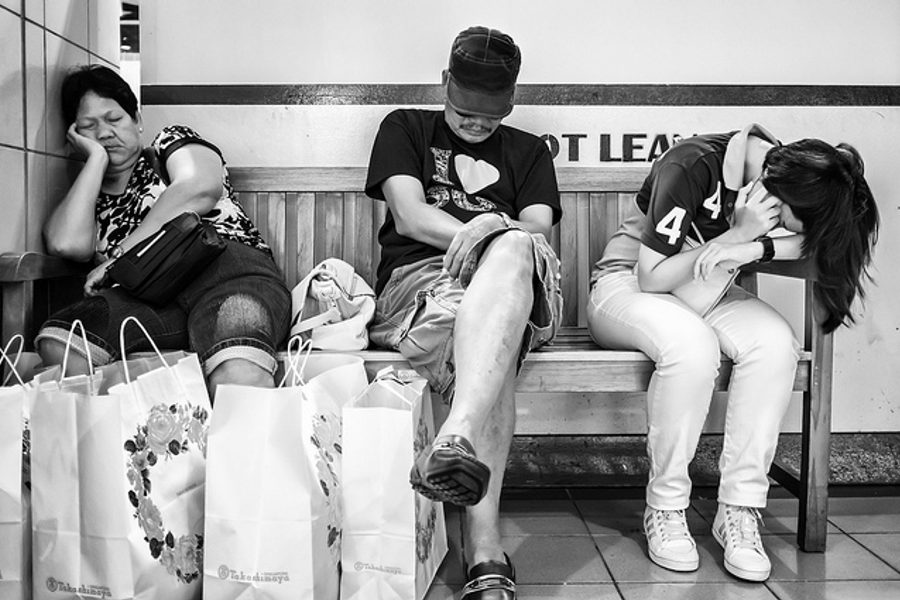Can We Reclaim The Holiday Season From Corporations?
A guide to giving children joy, instead of more gifts.
Frida Berrigan

Seamus is covered in peanut butter and dragging a cell phone charger around while he carries a box of tampons in the crook of his arm. Not exactly photo-finish perfect parenting, but okay. He is fully occupied for the moment, and nothing he is holding can do him harm, right?
He is headed for the bathroom. My one concern is that he will decide to store his now-precious items in his favorite place — the toilet. Is the lid on? I think so, but the little genius can open it, no problem. I am listening for the splash. I think the charger would be okay, the tampons not so much. I am not even sure where he found them; I am almost seven months pregnant and haven’t had much use for them recently. But I don’t want to see them wasted either — they are too expensive to get waterlogged in an open toilet by a 16-month-old. I am encouraging his independence and curiosity, so I don’t get up to check on him.
But as I listen to him noisily exploring the second floor of our house — door knobs, rugs, dust bunnies, the basket of neatly folded laundry outside of his sister’s room — I think about his room full of toys. There is almost not enough room to play because there are so many toys — blocks, cars, stuffed animals, board books galore, musical instruments, and plastic things that talk, squeak and moan. But here he is, in the bathroom, happy as a little, nosy, box-emptying, stuff-strewing clam. Every corner of the second floor — except his room full of toys — entices, beckons, tempts.
It makes me think: “This kid doesn’t need any toys.”
That notion is three quarters of the way to heresy, especially this time of year. Americans spend more than $20 billion a year on toys for kids — with most of that green leaving their pockets between now and the end of December. Please do not spend any of that on toys for our Seamus.
Type the words toys, boys and toddlers into your browser and more than 9 million sites come banging back at you — full of large hunks of plastic, metal and electronics for little boys like Seamus. Things like Let’s Rock Elmo (by Hasbro and on sale for $29.98 at Toys “R” Us), where the bright red Sesame Street character sings, dances and plays music along with your kids. Or the Very Hungry Caterpillar rocker, a plush oversized insect for kids to ride and rock ($107.00 from Amazon). Or the B. Alphaberry, a little blue cellphone-like device that sings the alphabet in four different musical genres as the kids push the letter buttons ($26.99 at Diapers.com). In product reviews, many parents credited this device with teaching their toddlers the alphabet — but they might sound like Garth Brooks or Nelly when they recite the letters.
The thing is, none of these toys actually sound all that terrible, do they? I’ll tell you what is terrible, though: The singing vacuum cleaner that our friends’ four-year-old gave Seamus. It was a newbie-mommy move on my part to be grateful and pleased with this hand-me-down. My “oh isn’t this nice,” “parenthood is solidarity” lasted right up until the moment I heard the thing screech “it’s clean up time!” on eternal repeat. And then I thought, “Ah ha, the only way to get rid of some toys is to encourage your kids to pass them on to littler children.” Evil genius! Nevertheless, Seamus loves the vacuum. I just hide it on a regular basis.
My family celebrated Christmas at Thanksgiving this year. My brother and sister-in-law gave Seamus a big box full of my nephews’ old clothes, a bunch of board books and — best of all — long, warm toddler socks. (Too many little kids’ socks are anklets, as though all babies don’t need to keep their calves warm.) He delighted in making a big pile of all the items, and all of it will come in handy, but the real gift was the box itself. He was occupied for hours — in the box, out of the box, pushing and pulling the box, turning the box over, getting on top of the box, hiding underneath the box. It was a source of endless fun, and his ankles were no longer cold.
We were deep in the woods of central Pennsylvania for the holiday, and so participating in Buy Nothing Day (pretty self-explanatory, no shopping on the great American bacchanal of consumption “Black Friday”) was no problem. But we missed out on Small Business Saturday as well. Back in New London, downtown was crowded with shoppers as businesses offered gifts and special deals to draw people away from the malls and box stores and into local ones. Our friends down the street have organized a series of craft get-togethers between now and Christmas. I’m looking forward to cozying up with a craft project (maybe potato print cards) and a mug of hot chocolate, chatting with my neighbors while I work.
These are just a few modest efforts, from the international to the super-local, aimed at trying to help consumption-crazed Americans take it a little slower during this holiday madness. The National Retail Federation estimates that you, me and all the rest of the people in this country will shell out $602 billion this holiday season. What? Really? That is a huge outlay, more than the GDP of many countries. How can we resist all the messages — subliminal and screaming “buy, buy, buy, buy” — that come at us during the month of December? How can we reclaim the holiday season from the corporate conglomerate?
Let’s start by asking, what do we really need? To be warm and healthy and with the ones we love, right? What do our kids really need? Love, connection, warm knee socks and not much else, right?
Now, even as I say that, I will acknowledge that there are some beautiful, well-made toys out there that are designed to stimulate young minds and bodies and spark their imaginations. The Bruderhof, a Protestant community in New York and Pennsylvania, runs Community Playthings, which makes wooden toys, “playscapes,” and playroom furniture that is sturdy, thoughtful, kid-appropriate and made with sustainably harvested maple from the United States. It is also really expensive. A set of five small trucks will set you back $260.
The Land of Nod catalog is chock full of lovely, hip toys and stuffed animals. Their Rainbow Wood Stacking Toy looks kind of like a Unitarian Universalist worship object (if we UU’s worshipped objects) and sells for $79.00. The Knit Turtle is $19.95 and looks like something that someone only slightly craftier than I could whip up in no time. There is also an elephant and a hippo. You can buy a whole menagerie of knit animals in soft hues. I don’t think Seamus would ever play with them, but they would look lovely on top of his dresser. GreenToys makes trucks and blocks and all sorts of other toys in California out of recycled soda bottles and old milk jugs. They have a really fun-looking recycling truck just like the one Seamus waves to on Tuesday mornings out in front of our house. It is $27.99, but the recyclables to load into the back are not included.
I will covet all of these gorgeous toys on Seamus’ behalf, but I will not buy him any of them. In fact, this Christmas season I am going to start unloading his noisiest and most obnoxious toys on unsuspecting friends with smaller children (just kidding, everyone).
Kids need to play. It is vitally important to their development. But they don’t need to play with Elmo or a hunk of plastic that recites the alphabet with a twang or a drawl. Kids need to play with us and with each other and all alone. Through play, they come to awareness, knowledge and insight. Through play, they come to experience, understand, and build a relationship with this fecund and fragile world — their birthright, their inheritance from us.
Play. You can’t wrap that and stick it under the tree, but it is more valuable and more enduring than even the most well-made, well-considered, well-intentioned toy on the market.
Reprinted from Waging Nonviolence.
Frida Berrigan writes for TomDispatch, Waging Nonviolence and other outlets. Her book, It Runs in the Family: On Being Raised By Radicals and Growing Into Rebellious Motherhood, was published by OR Books in 2015. She lives in New London, Conn., with her husband, three kids and six chickens.








